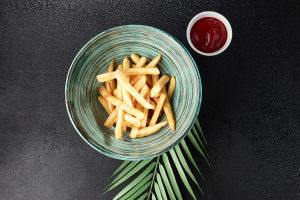Ice cream is a delectable frozen treat that has captivated people's taste buds for centuries. While it may seem simple, with its two main ingredients of sugar and milk, the art of crafting the perfect ice cream is a fascinating and intricate process.
Let's delve deeper into the world of ice cream, exploring its composition, manufacturing techniques, and the role of various ingredients.
Ice cream is a delightful amalgamation of solid, liquid, and gas in one space, with a delicate balance of flavors resulting from the interplay between these three states. The primary components of ice cream include drinking water, milk, milk powder, cream (or vegetable fat), sugar, and other key raw materials.
To enhance its texture and stability, food additives are incorporated. The production process involves a series of steps, including mixing, sterilization, homogenization, aging, freezing, and hardening, ultimately yielding a volume-expanded frozen product.
Depending on the milk fat content in the ingredients used, ice creams can be classified into three categories: whole milk fat ice cream, half milk fat ice cream, and phytolipid ice cream. Full cream ice cream contains 8% or more milk fat and is made from drinking water, milk, cream, sugar, and other ingredients.
It can be further categorized into clear type full cream ice cream, mixed type full cream ice cream, and combined type full cream ice cream. Semi-dairy cream ice cream, on the other hand, has a milk fat content of 2.2% or more and is composed of drinking water, milk powder, cream, margarine, and sugar.
It too can be divided into clear semi-dairy cream ice cream, mixed semi-dairy cream ice cream, and combined semi-dairy cream ice cream. Lastly, phyllo ice cream is primarily made from drinking water, sugar, and either vegetable fat or margarine, with the choice of milk being either vegetable milk or animal milk.
Similarly, it can be classified into clear phyllo ice cream, mixed phyllo ice cream, and combined phyllo ice cream.
The role of emulsifiers in ice cream production is particularly intriguing. Although their name suggests emulsification, they actually aid in demulsifying some of the fat. By replacing some of the milk proteins on the surface of the fat droplets, emulsifiers cause the film around the droplets to thin.
Consequently, during the whipping process, these droplets are more prone to clumping and aggregation. Demulsifying the fat is crucial as it plays a vital role in trapping air within the ice cream.
Aeration and freezing are simultaneous processes during ice cream production. Most ice creams incorporate a significant amount of air, which is achieved through the combination of fat, protein, and emulsifiers.
In fact, it is challenging to incorporate substantial air into a product devoid of fat and protein, such as sorbet. Higher-quality ice cream generally has a lower air content, resulting in a denser texture, while ice creams with higher air content tend to melt faster.
The freezing phase adds another essential element to the composition of ice cream: ice crystals. Modern ice cream production facilities typically employ liquid ammonia to achieve the necessary low temperatures for freezing.
However, before the advent of ammonia-based refrigeration, a mixture of water and salt was commonly used. The addition of salt to water lowers its melting point to -21.1˚C, while liquid ammonia operates at around -30˚C.
The colder the refrigerant used, the faster the freezing process, leading to smoother and creamier ice cream.


